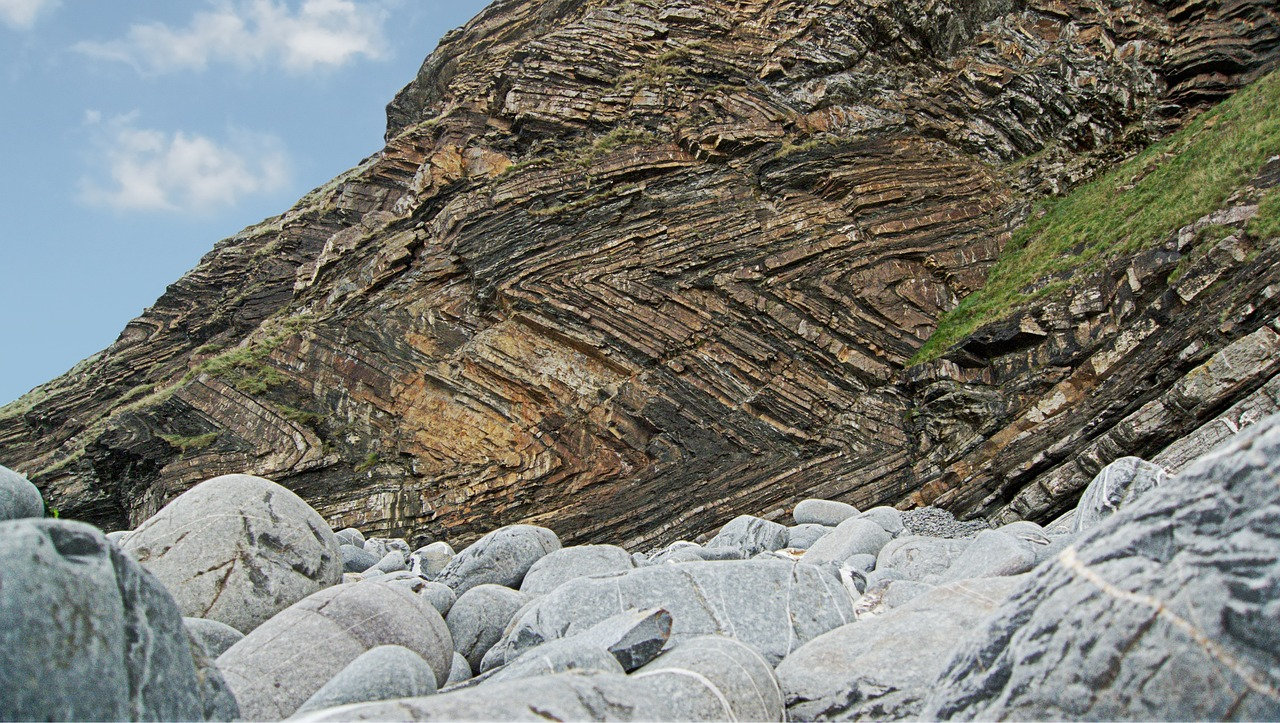sedimentary rock
Sedimentary rocks are one of the three main types of rocks, and they form through the accumulation, compaction, and cementation of sediment particles, organic matter, or chemical precipitates over long periods of time. They often preserve a record of past environments and can provide valuable information about Earth's history.
Here's a more detailed explanation of sedimentary rocks:
**Formation Process:**
Sedimentary rocks are formed through the following processes:
1. **Weathering and Erosion:** Weathering breaks down rocks into smaller particles through physical (mechanical) or chemical processes. Erosion transports these particles (sediment) by wind, water, ice, or gravity.
2. **Transportation:** Sediment is carried away from its source by agents like rivers, streams, glaciers, wind, or ocean currents.
3. **Deposition:** Sediment settles out of the transporting medium and accumulates in layers, typically in low-lying areas like riverbeds, lakes, deltas, and ocean basins.
4. **Compaction:** The weight of overlying sediment layers compresses the lower layers, squeezing out water and air, which causes the sediment to become compacted.
5. **Cementation:** Minerals dissolved in groundwater precipitate and fill the spaces between sediment grains, binding them together into solid rock.
**Types of Sedimentary Rocks:**
Sedimentary rocks are classified based on their composition and texture:
1. **Clastic Sedimentary Rocks:** These rocks are composed of fragments of pre-existing rocks that have been weathered, transported, and deposited. Examples include:
- **Sandstone:** Composed of sand-sized particles (mainly quartz) cemented together.
- **Shale:** Composed of clay-sized particles that have been compacted and cemented together.
- **Conglomerate:** Composed of rounded gravel-sized particles cemented together.
2. **Chemical Sedimentary Rocks:** These rocks form from the precipitation of minerals from water solutions. Examples include:
- **Limestone:** Composed primarily of calcite precipitated from seawater or freshwater.
- **Rock Salt (Halite):** Composed of the mineral halite, which precipitates from evaporating seawater or saline lakes.
3. **Organic Sedimentary Rocks:** These rocks form from the accumulation and compression of organic matter. Examples include:
- **Coal:** Formed from the accumulation and compaction of plant debris in swampy environments.
- **Chalk:** Composed of microscopic calcium carbonate shells of marine organisms.
**Texture:**
Sedimentary rocks exhibit various textures, including clastic texture (grain size and shape), bedding (layering), sorting (uniformity of grain size), and cementation patterns.
**Significance:**
Sedimentary rocks provide valuable information about past environments, climates, and the history of life on Earth. They often contain fossils, which are the preserved remains or traces of ancient organisms, providing insights into past ecosystems and evolutionary history. Sedimentary rocks also hold important natural resources such as coal, oil, natural gas, and groundwater.


Comments
Post a Comment